10 Social Listening Tools and Who They’re Best for
By BrandwatchJul 14
Join us and boost your social media potential with our data-led event
Published March 21st 2016
Although it’s now impossible for marketers to imagine a world without Twitter, conscious campaigns and movements on Twitter are still relatively recent. We’ve selected some of the most impactful campaigns over the last ten years to demonstrate Twitter’s incredible rise in the world of marketing and highlight the best of the last decade. Twitter’s conception was somewhat understated. Devised from a “day long” brainstorming session, the first tweet was sent as an SMS designed to communicate with a small group of people on March 21, 2006.
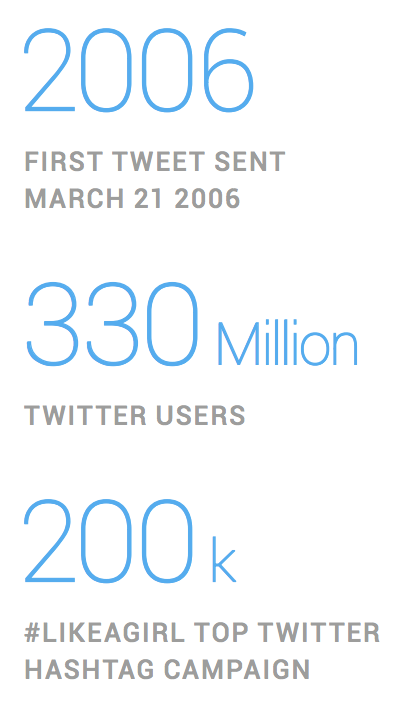 The tipping point for Twitter, was at 2007’s SXSW where conference delegates used it to communicate. On seeing their tweets appearing on plasma screens around the event, use of the service spiralled. Our report is a celebration of ten years of Twitter and the enormous impact it has had on our lives as marketers over the last ten years.
The tipping point for Twitter, was at 2007’s SXSW where conference delegates used it to communicate. On seeing their tweets appearing on plasma screens around the event, use of the service spiralled. Our report is a celebration of ten years of Twitter and the enormous impact it has had on our lives as marketers over the last ten years.
Our campaign analysis begins in 2008 with the Obama #YesWeCan election campaign and ends with Sport England’s #ThisGirlCan from 2015. Notably, our research tracks the rise of the hashtag and its growing significance in campaigns. Created in 2007 virtually at the dawn of Twitter, it has become integral to the promotion of any brand, campaign, political or social movement and also crucially adopted by rival platform, Facebook and is used as the main discovery tool on Instagram.
The growth of Twitter from 4.1 million users in 2008, where we start our analysis, to over 330 million today has changed the landscape of how we communicate within all industries. Our statistics show how less than three thousand people responding to a call to action on social media via a hashtag in 2008 (#YesWeCan) was significant, now brands should expect closer to 200 thousand (#LikeAGirl). With such a rapidly increasing response rate, it’s easy to understand why Twitter would play such an important role in today’s campaigns.
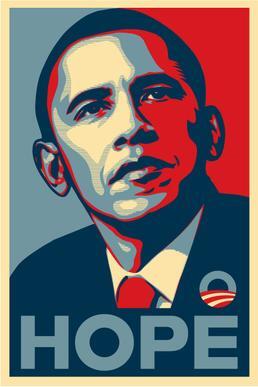 On seeing the hashtag #YesWeCan, one would automatically think of Obama’s 2008 election campaign, but in fact, less than 3,000 people actually used the hashtag in the three-month run-up to the campaign, despite 69.5 million Obama voters who likely knew the slogan.
On seeing the hashtag #YesWeCan, one would automatically think of Obama’s 2008 election campaign, but in fact, less than 3,000 people actually used the hashtag in the three-month run-up to the campaign, despite 69.5 million Obama voters who likely knew the slogan.
Hashtags were not very commonly used in campaigns at that point and Twitter was still very new to most people. Social networking was just dawning as an accepted means of communication, hence 2008’s search for a new president was famously dubbed The Facebook Election, but it still had huge significance for what Twitter would grow to become.
The biggest spike occurred on November 5th in reaction to Obama’s acceptance speech.
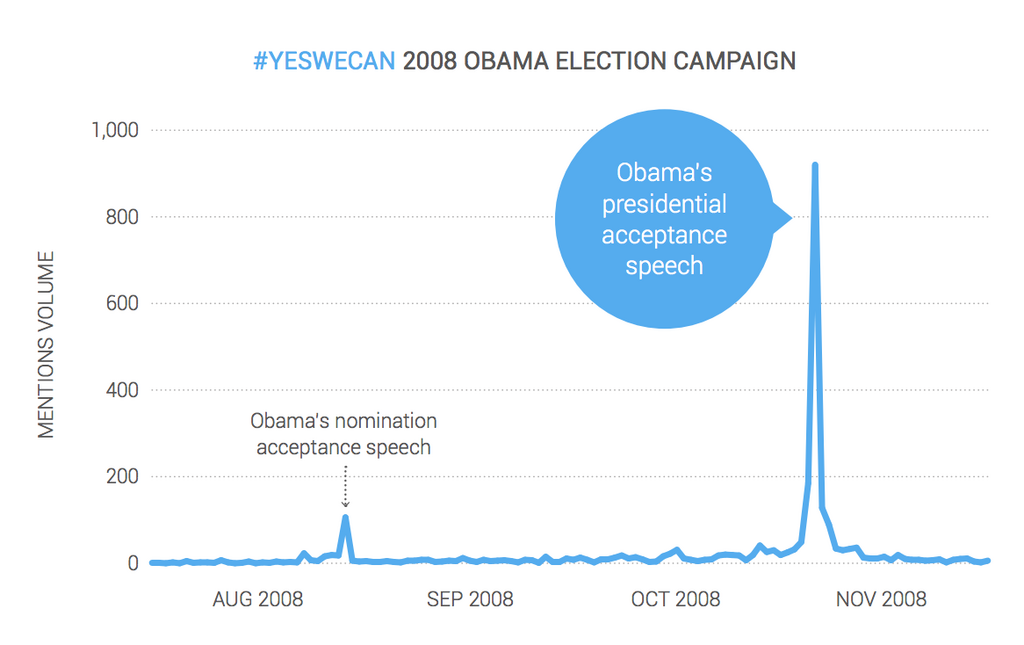
In 2010, Livestrong aimed to beat its own Guinness World Record for the “Most Widespread Social Networking Message.” And it did, by a long way.
Having gained close to 210 thousand mentions in 24 hours during the 2009 campaign, this was dwarfed in 2010 by over 300 thousand tweets and over 1.8 billion impressions.
PayPal and SWAGG donated $0.05 for every mention with the hashtag to cancer charities. Celebrity tweeters getting behind the message included Khloe and Kim Kardashian, Donnie Wahlberg, Freddy Amazin’ and Ariana Grande.
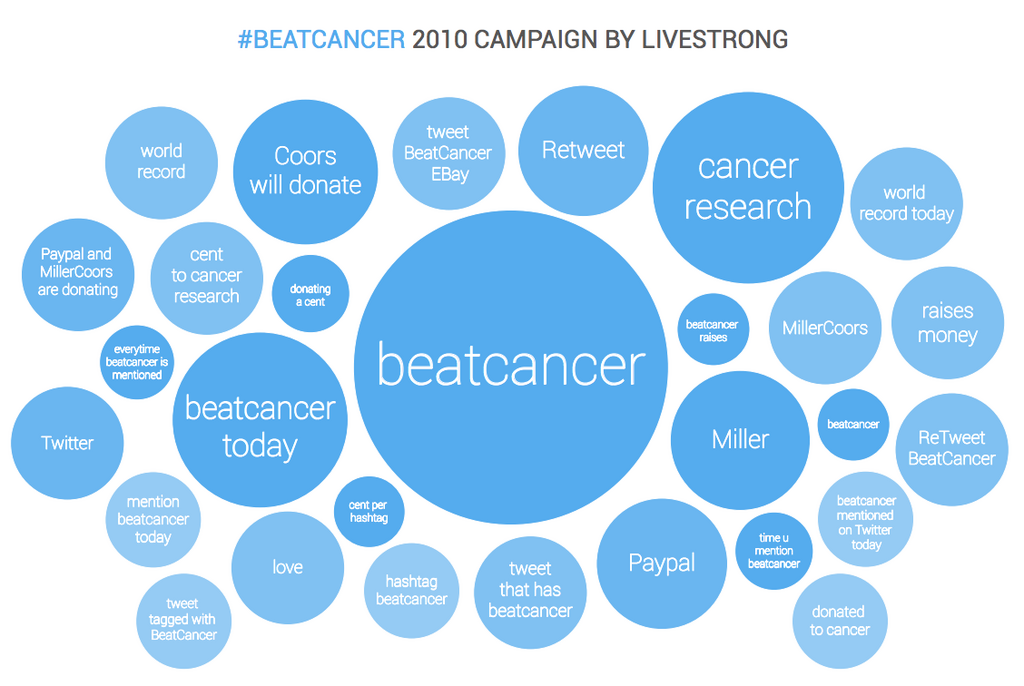
Inspired by a tweet in response to their Super Bowl advert, In 2011 Audi launched a campaign encouraging consumers to be creative in letting them know why they wanted to drive the brand new R8. The lucky social media winner would get the keys to an Audi R8 for a day.
Ultimately, not only did the winner of the competition get an R8 for the day, so did the social media-savvy Super Bowl fan who inspired the campaign with her #WantAnR8 tweet.
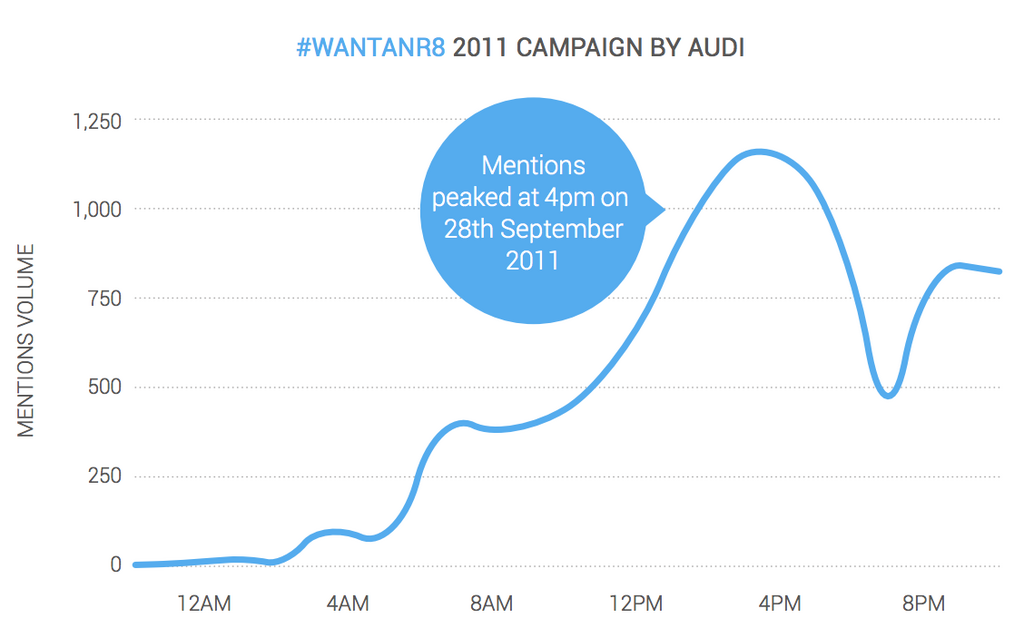
By now, a veteran of hashtag campaigns, The White House took its fight over payroll tax to Twitter in Dec 2011 with their #40Dollars campaign.
The $40 figure was the average amount that American workers would save under the existing payroll tax ruling. On December 20th, @whitehouse tweeted “What does $40 mean to you? #40Dollars” to their 2.5 million followers (now 9.5m). 62 thousand Americans responded via Twitter.
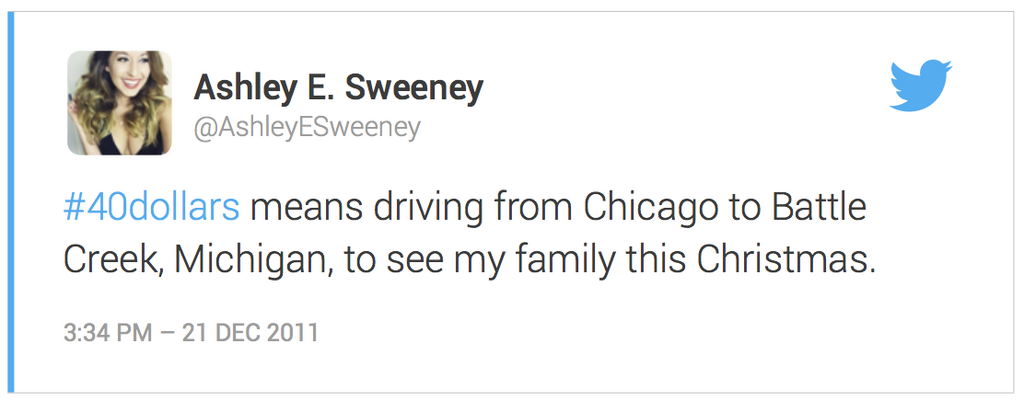
Initially trialled in Australia, during the summer of 2013, the #ShareACoke campaign went global. Coca-Cola created 1k different named labels for their bottles in stores — ranging from Maria and James to Superstar and Soulmate — each adorned with the hashtag #shareacoke to encourage consumers to select a friend to share a Coke with as well, of course, as sharing it on social media.

More than 150,000 bottles were sold and the first summer of the campaign bagged 160,000 mentions on Twitter and 740 million impressions.
Even the Royals weren’t safe from this campaign as Coca Cola used specially created bottles to toast the arrival of Prince George. The campaign was endorsed by celebrities, with many getting involved as shown below in the most mentioned tweeters.
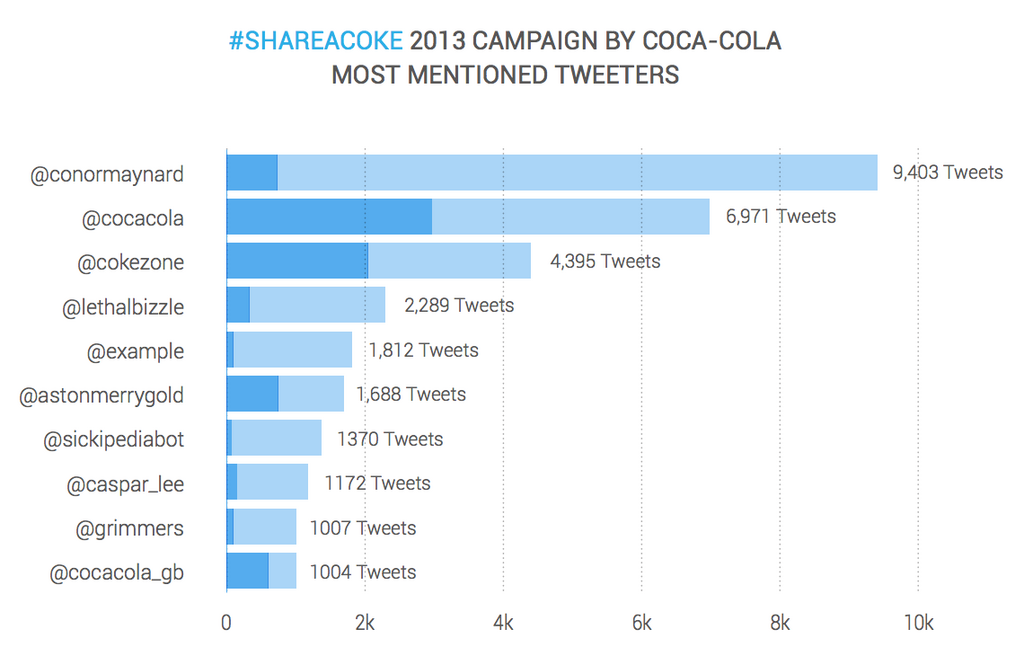
Launched on Oct. 28, Tweet-a-Coffee let consumers give a $5 gift card to a friend by putting both “@tweetacoffee” and the friend’s handle in a tweet.
To do so, users had to link their Starbucks account to Twitter and their credit card to the account. In just over a month after launch, the campaign had already generated over $180,000 in additional sales for Starbucks.
The real coup for Starbucks was that it had also linked 54,000 users’ Twitter IDs to their mobile phones and customer IDs building up a detailed profile of their customers.
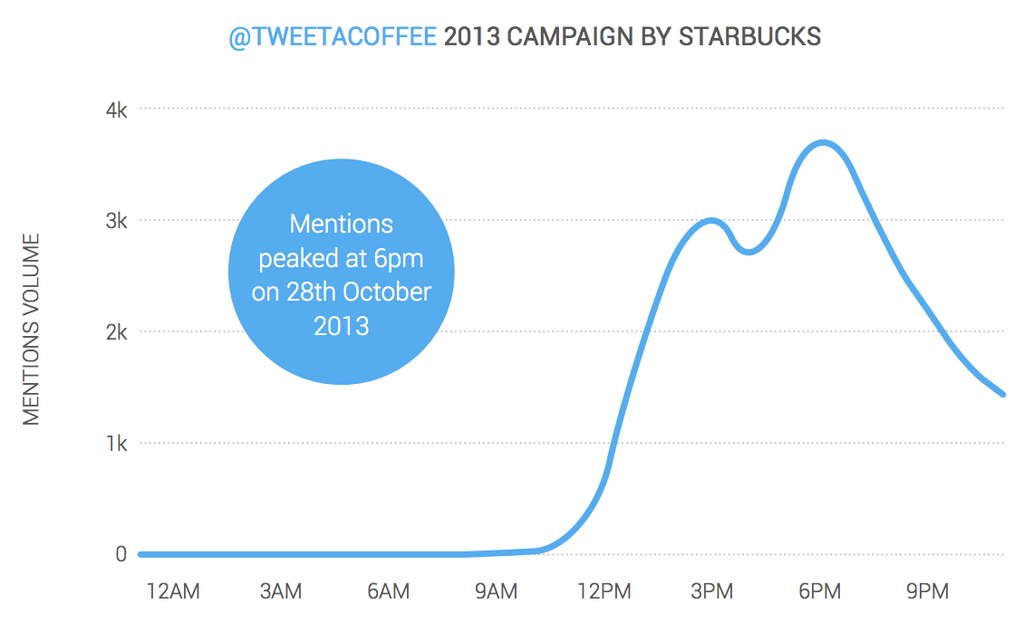
Cancer Research UK raised £8 million via #nomakeupselfie and they had no initial intention to create a viral campaign. By by piggy-backing on something they spotted online, a number of people posting selfies to raise cancer awareness using the #nomakeupselfie hashtag, they generated a huge amount of cash.
In the morning of March 19th, the team noticed a huge surge in interest and the charity reacted quickly, tweeting the first and only fundraising ask. @CR_UK posted a selfie of Dr. Kat Arney, the organization’s science information officer, holding a sign that said ‘We love your #NoMakeUpSelfie’and included a text code for donations.
The campaign was easy to join in and the call to action was simple.
Whether you were posting a photo, or donating money, all you needed was a phone. Although the trend started in the UK for a UK Charity, 34% of tweets were from US profiles and a further 5% from Europe proving that hashtags transcend language barriers.
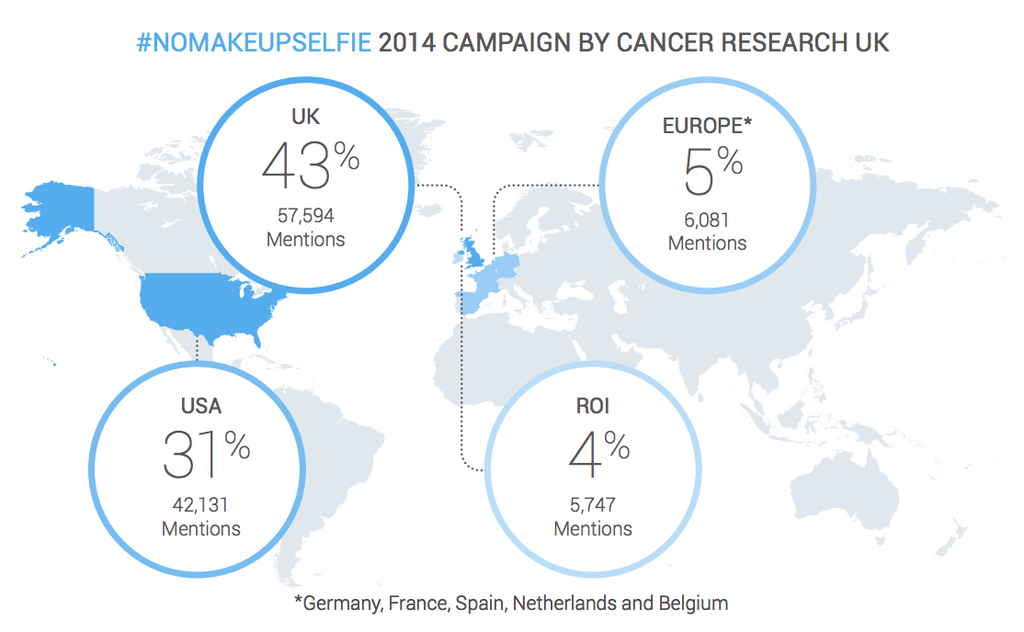
A small initiative that began in a Massachusetts living room spiralled into a global social media phenomenon in July and August of 2014. It encouraged a competitive spirit, with each participant trying to make their video more amusing, absurd or outrageous than the last.
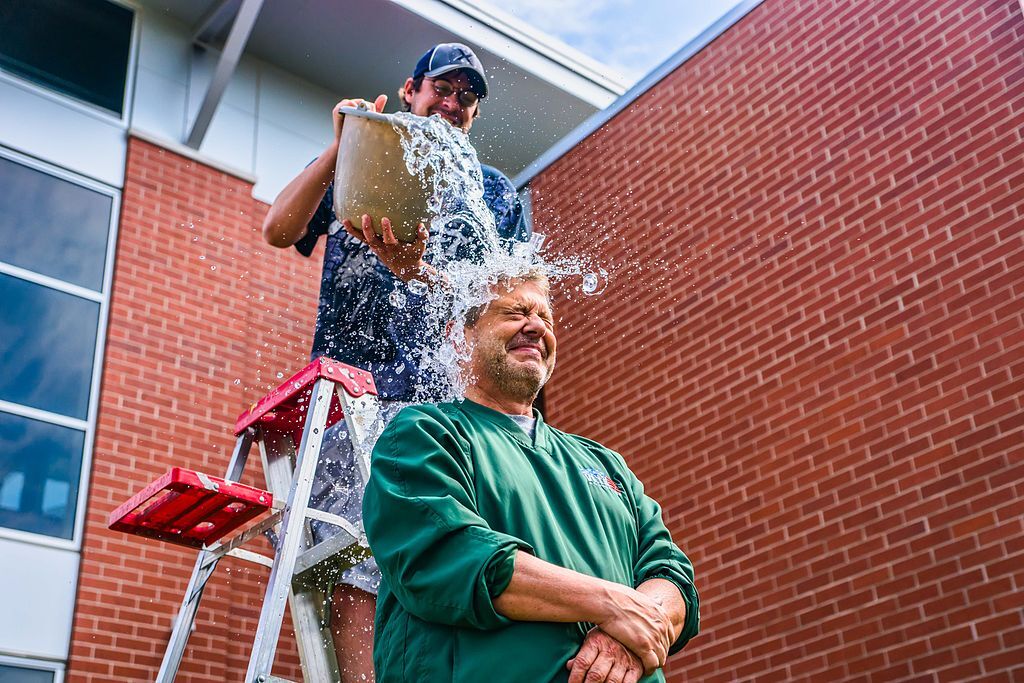
It perfectly embraced the community spirit of social media for a very worthy cause. Similarly to the #nomakeupselfie campaign, it was an accidental campaign not initially set up by the charity it ended up promoting. Celebrities from Rita Ora to Lady Gaga as well as business leaders and political figures including Bill Gates and George Bush embraced the challenge.
Mentions peaked at over 1,318,962 in just 24 hours on August 20th when Justin Bieber took the challenge twice in one weekend to raise awareness.
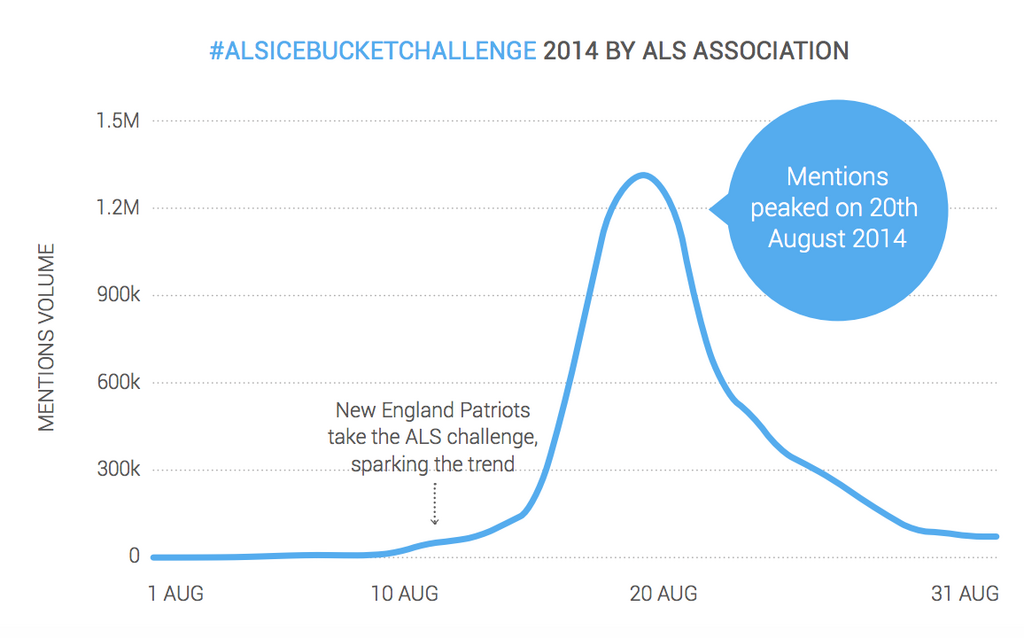
In the summer of 2014, Always managed the insurmountable task of getting women to willingly share a campaign about feminine hygiene products.
Instead of focusing on the reliability of their product as they had done in previous campaigns, they focused this time on the psychology of
their consumers. By turning the phrase ‘like a girl’ on its head, redefining the commonly derogatory term as a positive phrase. In a new, inspiring way the brand used using social media and PR to spread the message and struck a chord with their market and beyond.
The even spread of interests of Twitter users participating in the conversation for the #LikeAGirl campaign shows that Always managed to target girls from every walk of life, not just one particular sector.
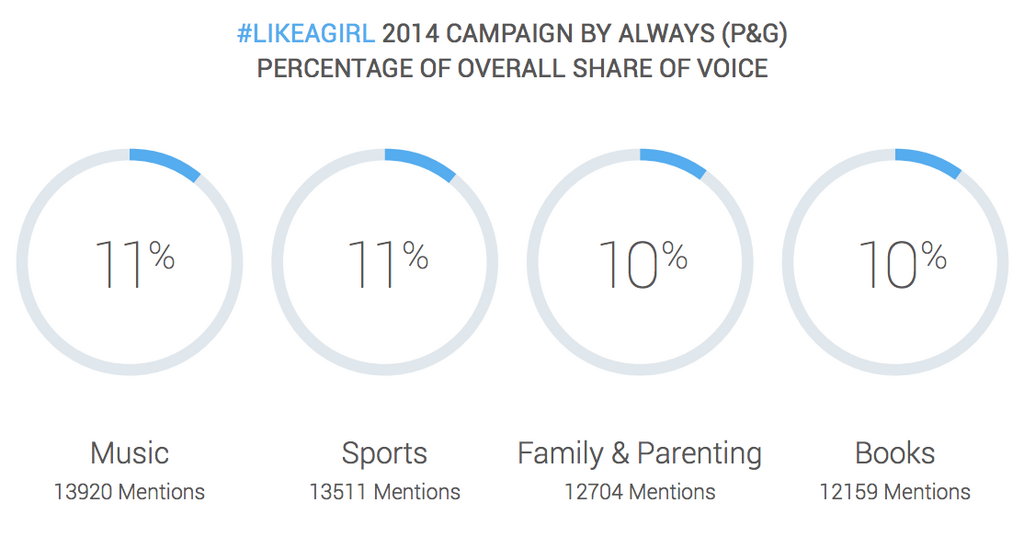
Sport England’s nationwide campaign to get women and girls moving regardless of shape, size and ability made a huge impact on social media
in the month when we least want to leave the sofa. The first campaign of its kind to feature “women who sweat and jiggle as they exercise”, 13 million people have viewed the flagship This Girl Can film online. The campaign was designed to prompt a change in attitudes and help boost women’s confidence.
Although the biggest spike in the use of the hashtag was on the day the campaign launched, interest sustained over the course of two months with an extra boost on International Women’s Day.
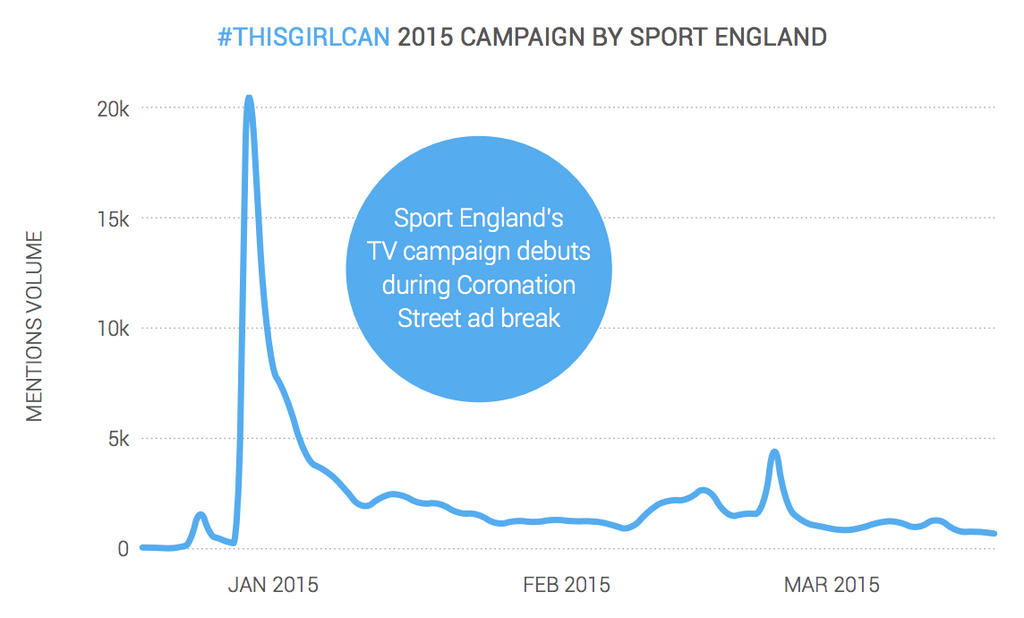
Over the last ten years, Twitter has dramatically shifted the marketing landscape. Today’s successful campaigns not only make a statement, but they also start a conversation.
When Twitter first appeared at SXSW as a group messaging service, its seismic effects on the way businesses interact with consumers could never have been imagined.
Yet ten years after its inception, it’s impossible to deny these changes. Whereas traditional media was a one way deluge of information, Twitter has empowered consumers with the means to voice their opinions on one of the most public platforms in the world. As shown throughout this report, that gives brands the opportunity to create campaigns that activate their consumers in ways previously unimaginable. Of course, it also provides the general public with the means to create social movements that can ruin a company’s reputation within days or dramatically influence the course of political decisions on a global scale.
In this new light, marketers must now know their audiences better, be more prepared for rapidly evolving crises, and maintain a closer and more empathetic relationship with their online communities. Today’s marketers, when equipped with social media intelligence technologies, are able to instantly measure, analyze and understand the behaviors, interests, location and demographics of their specific audiences as never before. That information can provide the framework for future campaigns.
Of course, technology and information are only a part of the picture. It will also be up to marketer’s hard work and creativity to build campaigns over the next decade to excite the world as those in the past have.
Offering up analysis and data on everything from the events of the day to the latest consumer trends. Subscribe to keep your finger on the world’s pulse.
Make your next campaign a success by knowing what to measure.
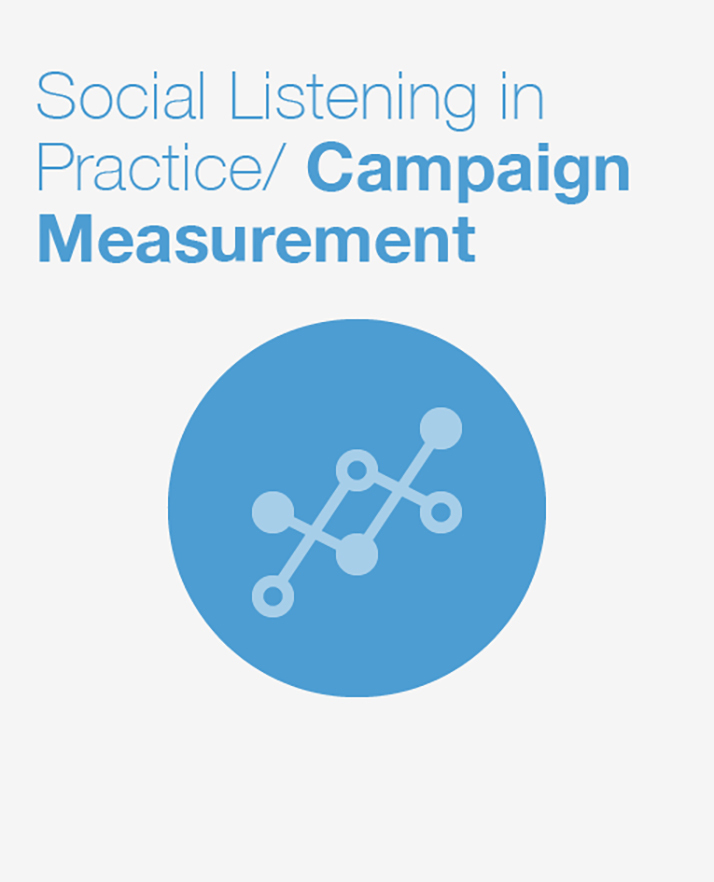
Existing customer?Log in to access your existing Falcon products and data via the login menu on the top right of the page.New customer?You'll find the former Falcon products under 'Social Media Management' if you go to 'Our Suite' in the navigation.
Brandwatch acquired Paladin in March 2022. It's now called Influence, which is part of Brandwatch's Social Media Management solution.Want to access your Paladin account?Use the login menu at the top right corner.